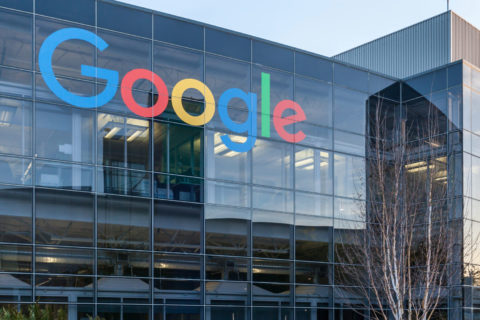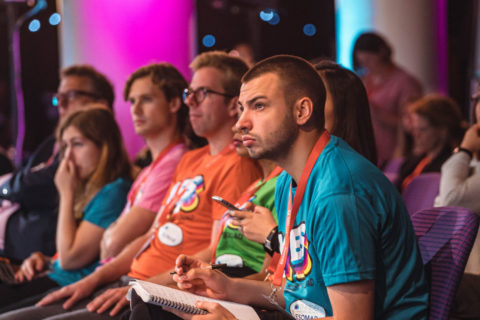By Betty Adamou
Over the next three columns, Betty Adamou focuses on Games and Gamification in Marketing, where the following are explored:
1) the role of games in marketing 2) marketing games in action 3) data privacy and ethics in marketing games.
Kim Kardashian-West is one of the most recognisable brands on the planet.
Mrs Kardashian-West is a model, TV star, and social media influencer. She’s also been a TV producer, published a book, has a range of emoji’s, has recently launched KKW Beauty (her make-up line) and Skims, her clothing brand, and she is also one of the worlds wealthiest…computer game characters.
The Kim Kardashian: Hollywood app game is Kim’s most lucrative product yet – more than her books and make-up sales combined. Her role-playing game, in which players are tasked to go from Z to A list, made $1.6 million revenue in the first 5 days of its release.
Kim’s earnings from the game are so prolific, her tweet about how much money she was cashing in created a hullaballoo. Although the $80 million amount in the tweet is disputed, Forbes estimates that about half of Kim’s $52.5 million earnings in 2016 is said to be from the game. Half.

What do we learn from this?
Kim’s game grows her income, yes. But crucially it perpetuates her fame. The game is a marketing tool, and arguably one of the most lucrative examples of a Marketing Game in history. It’s a case-study in the money-making and consumer-pulling power of a well-designed Marketing Game.
What is a Marketing Game?
Marketing Games – also called AdverGames or Brand Games – exist to promote brands, products and/or services. Some well-known Marketing Games include Dumb Ways to Die, America’s Army, and most recently, the Colonel Sanders Dating Game from KFC. Although Marketing Games aren’t new, they’re being used more than ever before. This is due to the…
- Availability of game engines: game engines are packaged software systems for creating games, making it faster and easier to create them (like WordPress for websites).
- Constant availability, and ease of accessibility of games: we no longer have to wait to plug into a console. We have games on our phones, available 24/7. This means people can engage with brands whenever they wish through a Marketing Game
- Widened audiences of entertainment games means Marketing Games can be played by a wide range of consumers
- Insatiable demand from brands to engage users, and collect data: placing pressure on what marketing can and should do
An article by Gideon Spanier, Global head of media at Campaign Magazine and Media Week, notes that: “Some of Britain’s biggest companies are ripping up their advertising plans and rethinking how they communicate with consumers in a data-driven, digital world” – much to the detriment of external agencies. Brian Whipple, global head of Accenture Interactive, notes in the same article; “it’s about creating great experiences”.
These comments tell us that engagement, data and experience are all important to brands. Games, can, and have, offered the answer.
Games are the most engaging medium of all time. While this has been shown in countless studies from a scientific perspective, in 2017, this came true from a commercial standpoint. In 2017, mobile games alone accounted for more revenue than any other form of entertainment generating over $40 billion USD worldwide. That same year, people spent more money on all types of games (mobile, console, PC, etc), than they did on movies and music, at an estimated revenue of $92 billion USD.
When we play games, Dopamine, one of our four ‘happiness chemicals’, is released in our brains. Dopamine is proven to increase our focus and attention (as well as other benefits).
If brands want to engage people so we’re focused and attentive to their messaging, then using the most engaging medium of all time repurposed for marketing is the common-sense approach.
Indeed, AdverGames are just one of many types of ‘Serious Games’ (games used for a commercial purpose) where people have repurposed the power of games in many fields – from education (EduGames), fitness (ExerGames) and market research (ResearchGames) to gain higher levels of user engagement.
And because games can be made on almost any medium (board game, smartphone, VR, console, mixed media etc.) this means that they can be made on pretty much any budget. As such, Marketing Games can sit anywhere on the spectrum from ‘stripped back’ gamified marketing campaigns such as the Marmite Taste Face campaign, to fully-fledged AdverGames like It Comes from Below, produced by sportswear brand Under Armour.
While some traditional advertising still has high ROI, no other form of advertising offers the experiential immersiveness of games, engagement, or interactivity as Marketing Games do. TV ads, YouTube ads, billboards, posters – these are all one-way messages. Marketing Games offer a two-way interaction.
Specifically, Marketing Games offer an ‘8 in 1’approach. They…
- Engage users
- Promote products/services/people/things
- Inform users – why not share information about your company, brand or product when you have people’s attention?
- Collect consumer information – based on their data as they play
- Support sales for a brand – or donations, or awareness, through their engagement
- Support brand growth – brands can use the data collected in the game to support future business decisions
- Content breeds content; well-designed games have a way of growing exponentially
- Create Brand Experiences- games are experiential, so for brands looking to provide experiences, games can be a sound approach
In Part 2 of this column, I’ll show examples of Marketing Game to show the ‘8 in 1’ approach in action, and discuss how games, gamification and playful experiences can help save the high street.
In Part 3, I’ll discuss how we navigate the waters of data privacy and ethics when Marketing Games become more like forms of Market Research.
Betty Adamou is SeriousGame and Gamification Designer, Author of Games and Gamification in Market Research, and Founder of Research Through Gaming #HowGamesAreChangingTheWorld
This column is part of our #HowGamesAreChangingTheWorld series.
Each column focuses on the intersection between Games, Gamification and data.
Betty Adamou explores different issues, case-studies and industries where Serious Games and Gamification are being applied.
Cover photo by Charles Deluvio, Source: https://unsplash.com



1 comment
Vry usrful artical
Thanks
Maged